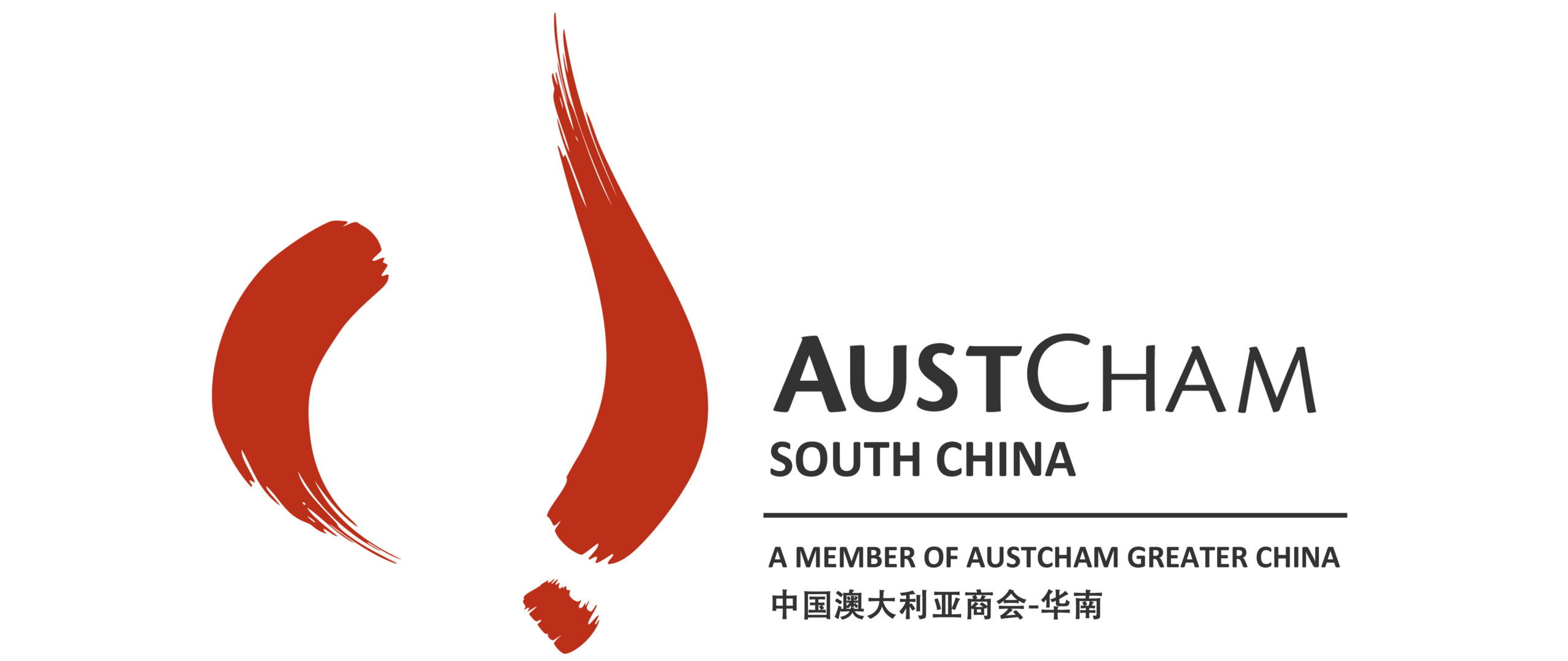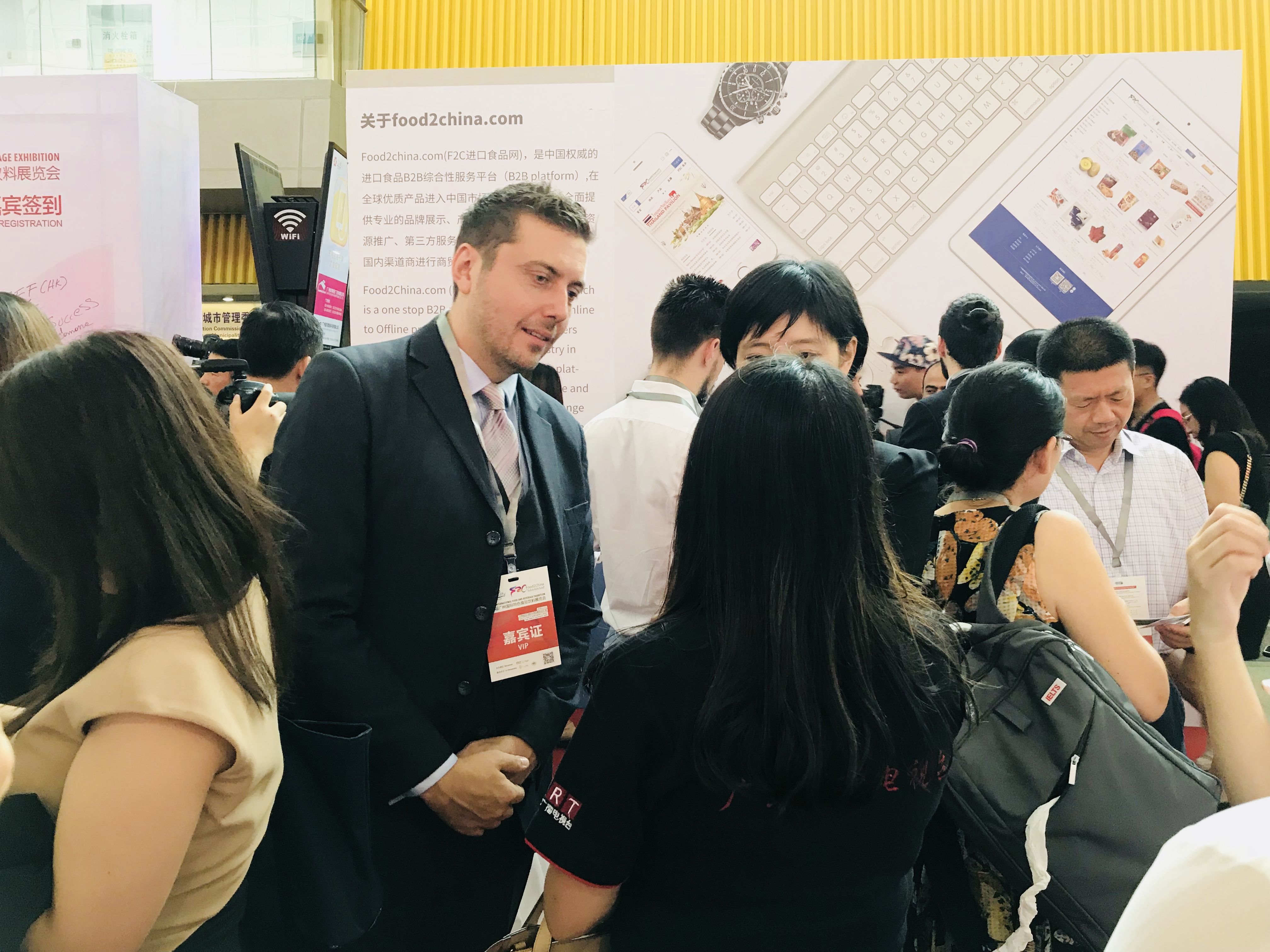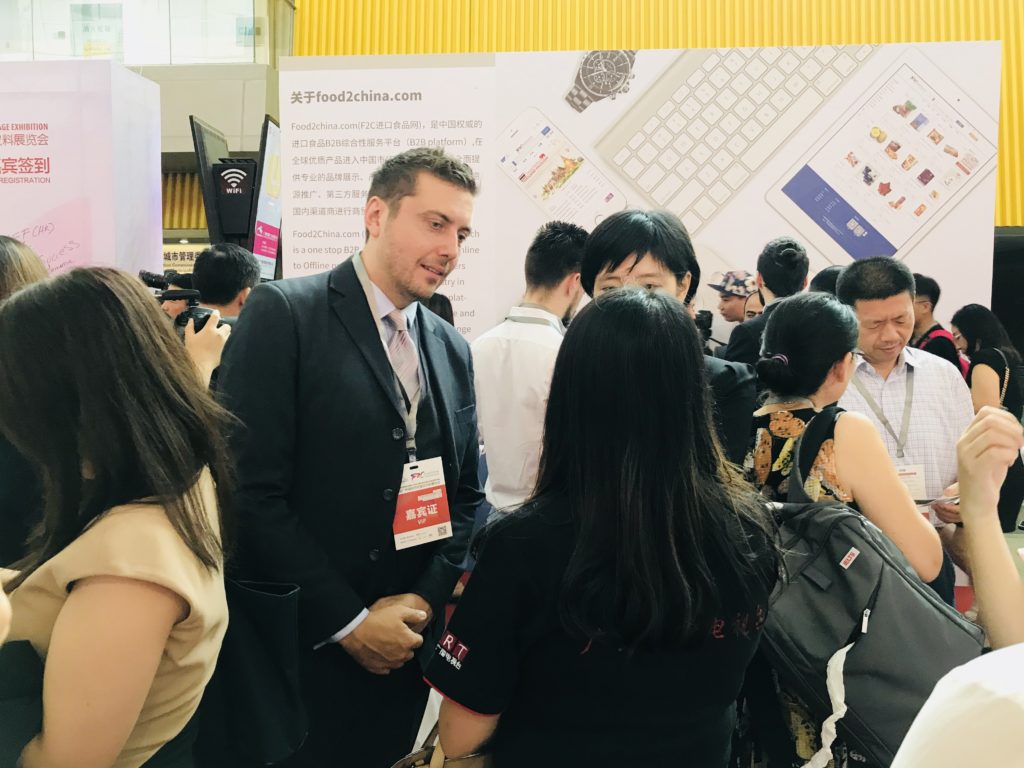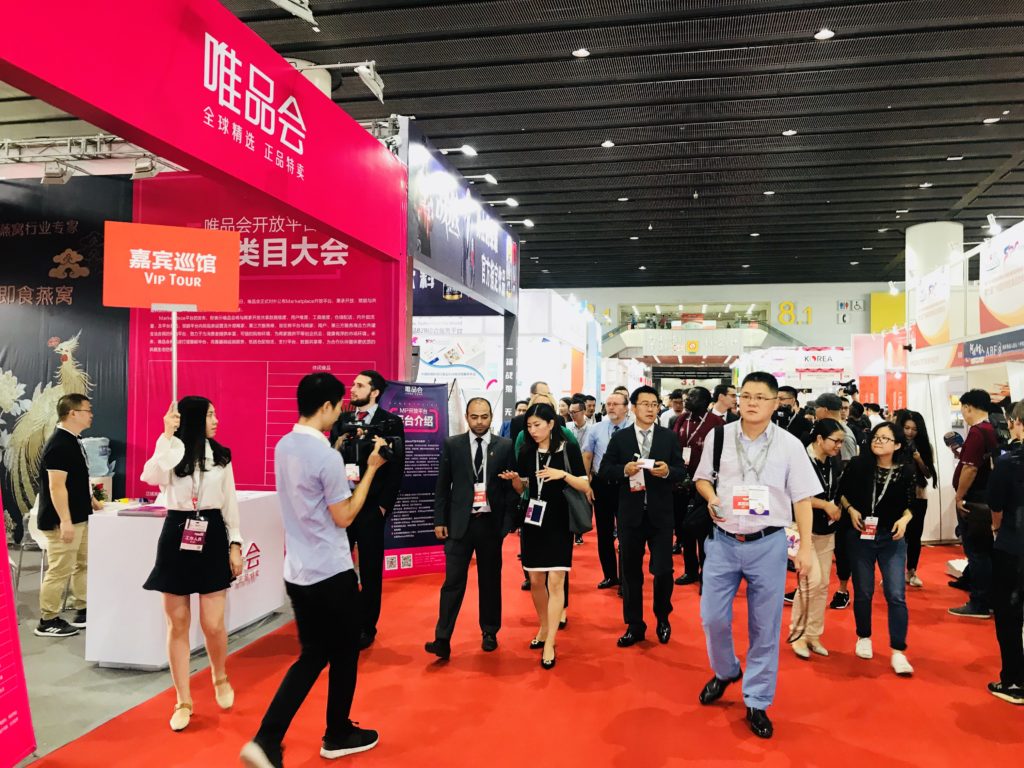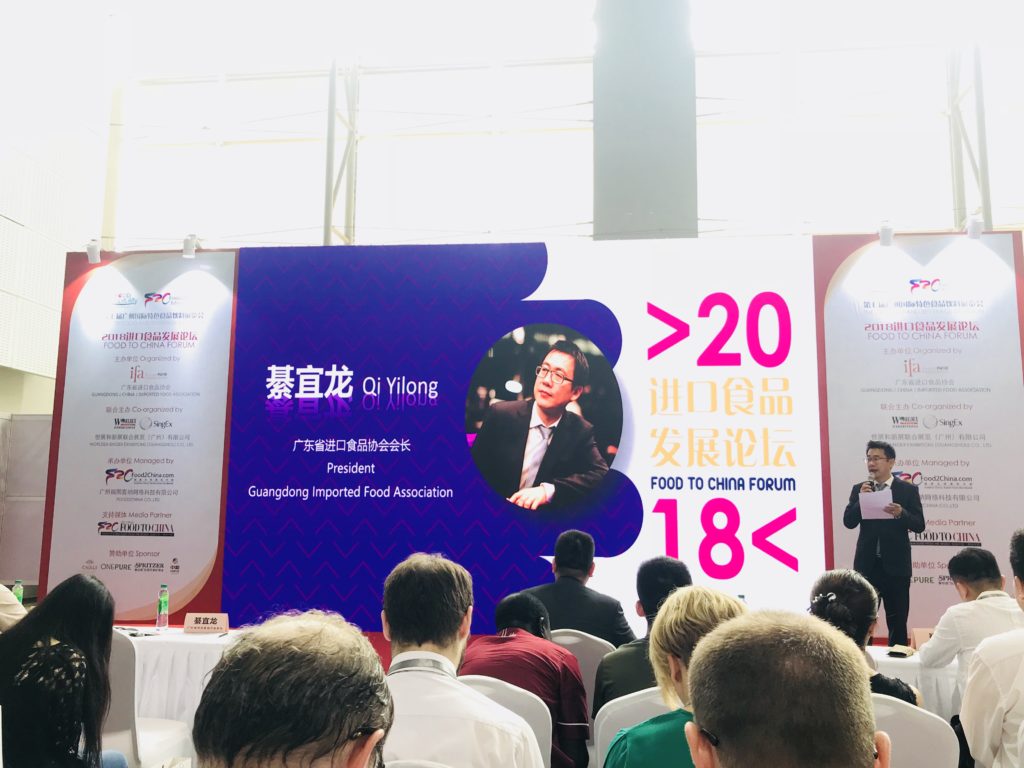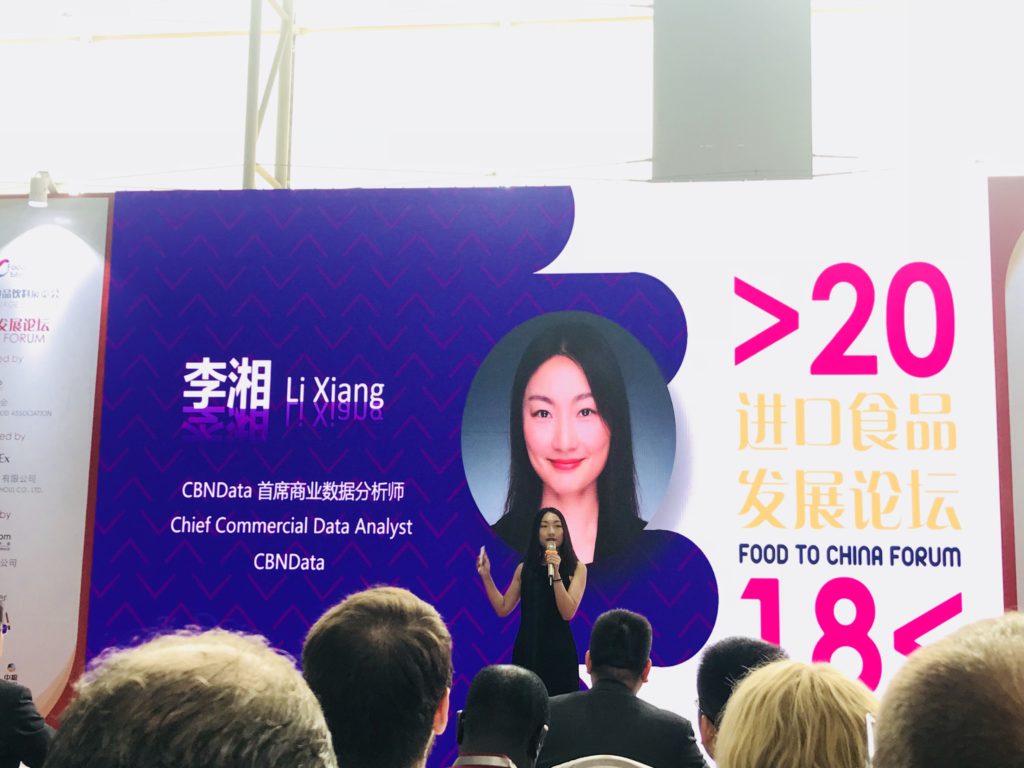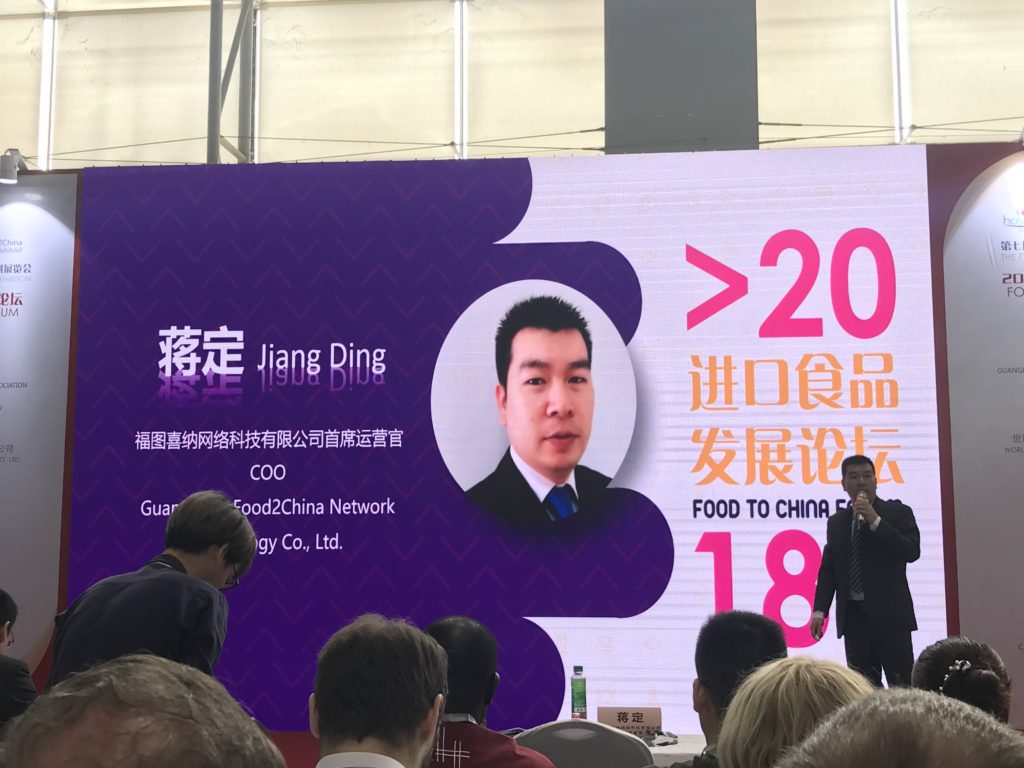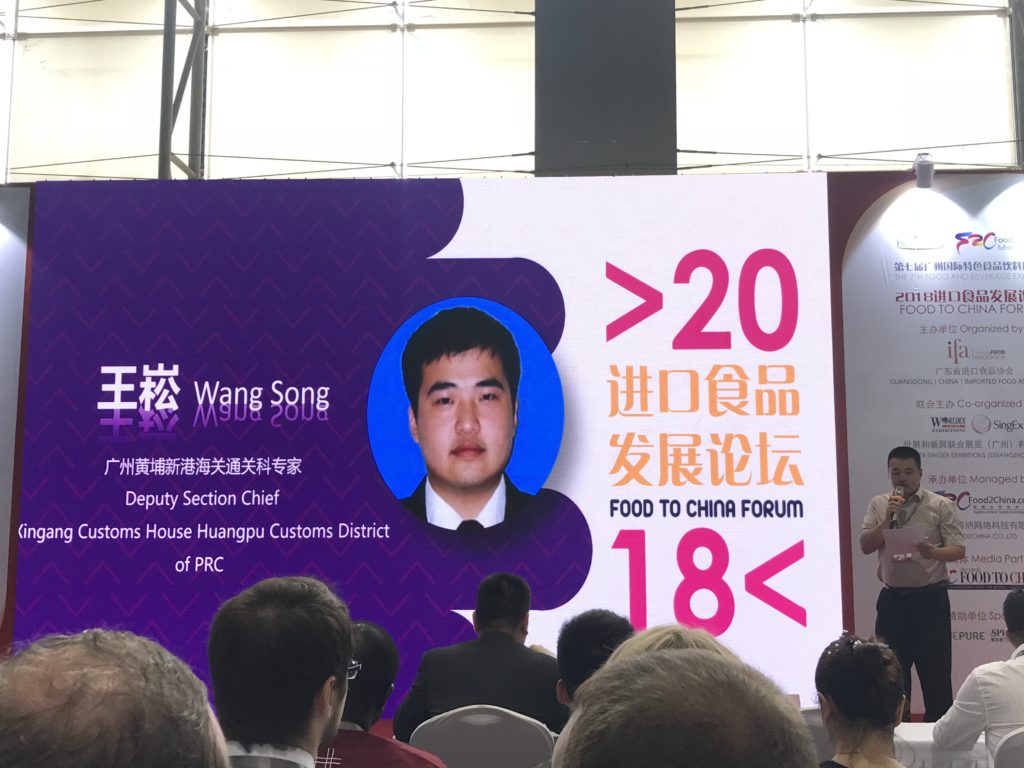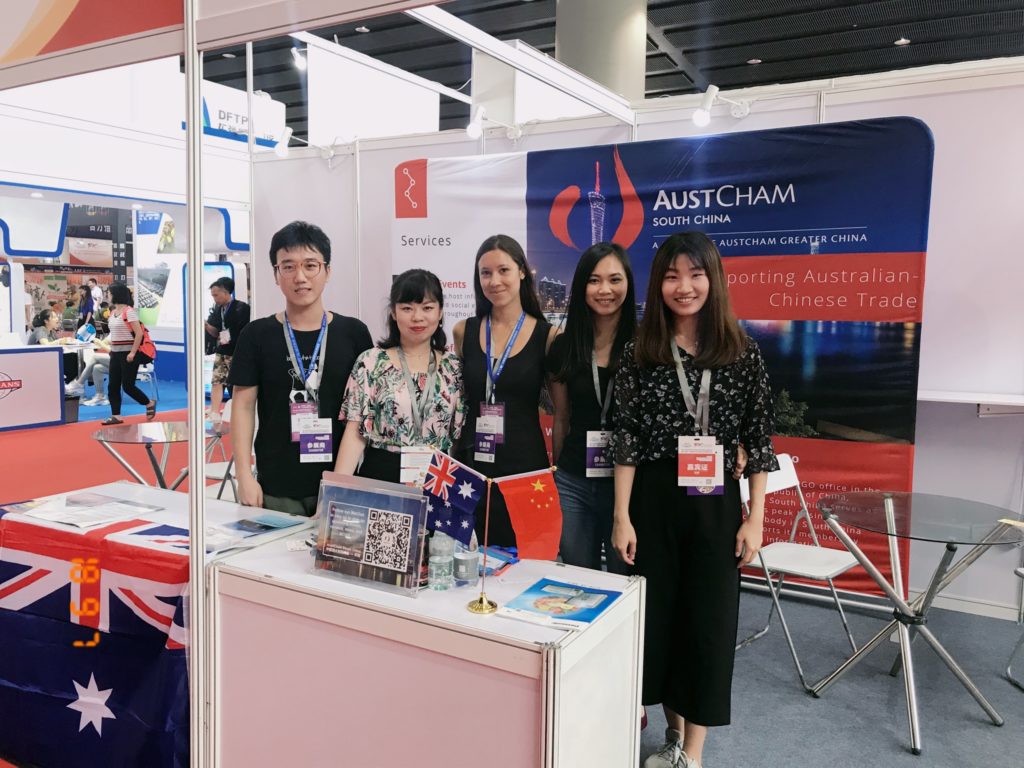Last Friday, AustCham attended the opening ceremony of the 7th International Food and Beverage Exhibition which lasted from September 7th to 9th. This Expo was held by The Guangdong Imported Food Association who invited Qi Yilong, President of Guangdong Imported Food Association; MS. Li Xiang from CBN Data; Mr Jiang Ding, COO of Guangzhou Food 2 China network; and Wang Song, Deputy Section Chief of Xinggang Customs House to share their insights about the imported food industry.
Mr. Qi Yilong gave the opening remarks –
In the context that China has reduced tariffs, newly opened opportunities in the imported food industry and demonstrated a strong demand in imported food consumption, this Expo aimed to gather industry resources to promote imported food in China.
Shared by MS. Li Xiang, Chief Commercial Data Analyst of CBN Data.
(Data source: Alibaba 50,000,000 people survey)
Consumption of imported food online in China:
The Chinese online food industry has been steadily growing over the last two years, especially in snacks and fresh food. Strategic growth in the Chinese market via cross-border e-commerce reached 7.6 trillion RMB in 2017. This represents huge market potential, but there are important things to consider when dealing in the food industry.
Who are your potential consumers?
The consumers for imported food in China are people who want a higher-quality of life and are willing to spend more and they have strong demand for cross-boarder consumption. Currently, online imported snacks are penetrating to low-tier cities, especially the 4th-tier cities. These online imported snacks are predominantly represented by candy, jelly, biscuits and chocolate. The most popular regions for imported snack foods are HK, Taiwan and Macao, but places are moving to Southeast Asia (Malaysia). In terms of marketing, the female consumers play an important role for purchasing online imported snacks, with the target consumers being 23-28 year-old females. What’s more, consumption of imported fresh food is highest in first and second tier cities and the purchasing of fresh vegetables and fruit overtaking seafood in 2017.
Notable trends & marketing strategies:
Three trends have emerged in Chines market: the increase in demand of fresh food such as lobster and crabs; the pursuit of natural food, such as codfish preferred by pregnant women, whose demand is two times bigger than ordinary women; and a stronger desire for more nutritious food such as salmons and blueberries.
Chinese consumers have diversified choices in imported food. For example, they are more willing to try other cuts of beef than steaks. The sales of sweet potato from Vietnam, mussels from New Zealand and tangerines from Australia have also grown steadily. Imported food from Thailand, Vietnam, and Australia contributed to diversified choices as well. Apart from various import channels, consumption is not subject to seasonal limits, meaning that consumers can get fresh cherries from all over the world throughout the year. Consumers also receive a better service, with more considerate and customized packaging, faster delivery, and more guaranteed after-sales (refund for spoiled food).
Shared by Mr Jiang Ding, COO of Guangzhou Food 2 China network
China will become the biggest food consumer in the world, according to the following data:480 million RMB imports, 192 importer COUNTRIES,17.6% growth rate, and 84% of Chinese families have brought imported food.
Why China?
China has resource restrictions and wants to balance its trade deficit. Its economy is growng rapidly in recent years. And the Chinese people have a good impression of imported food. All these factors make China the largest market in future.
Steps to import into China:
The first step is to find the source for importers or agents; next you need logistic companies for the transportation and storage; then you let the food go through commodity inspection and customs, and find clients to distribute it. The long journey of the overseas food entering into Chinese market is where the pain point is.
Suggestion:
Find your Chinese importers and partners to figure out all the supply chain for you. Don’t do it yourself.
Shared by Mr Wang Song, Deputy Section Chief of Xinggang Customs House
Customs trends:
There has been a 5 time reduction of imported tax rates on consumer goods since 2015.
The temporary tax policy is another way of benefiting the process of importing food without reducing the official tax. This is open to more and more industries, with the food industry included. This allows importers to contact local customs and adapt the temporary tax for the goods they imported. In addition, the digitalization of customs processes will reduce customs time by one third.
The AustCham South China team showcased their expertise in supporting the Australian food and beverage industry while at the expo. Thank you to the team at the International Food and Beverage Exhibition for the invitation and we look forward to next year.
For more information on how to get involved in AustCham’s trade show presence get in contact with our Events and Communications Manager Di Hu at di.hu@austcham.org
